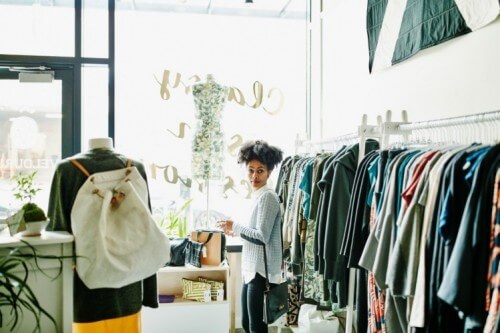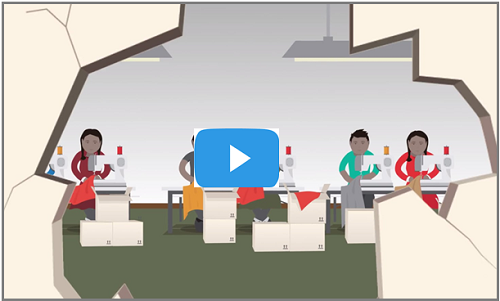ASN Bank working towards a living wage in the garment industry
Since 2016, ASN Bank has taken the lead in highlighting the importance of a living wage for textile workers. We discuss this with garment companies and inspire others who want to do something about it. Together with other parties within and outside the financial sector, we take initiatives that help promote a living wage in the garment industry and other sectors.
Long term goal
ASN funds invest in garment companies. If you invest in a company, you have an influence on its policy and how this is put into practice. The garment companies in the ASN investment universe meet our sustainability criteria. But they do not yet ensure that their own textile workers and those in the supply chain receive a living wage. ASN Bank uses all its leverage to positively influence the garment sector so that the following goal can be reached:
By 2030 the garment sector will have implemented all necessary processes to enable a living wage for workers in its supply chain.
This goal concerns the following fourteen companies: Adidas, Asics, ASOS, Esprit, Gildan Activewear, Hanesbrands, H&M, Inditex, KappAhl, Lojas Renner, Marks & Spencer, Puma and V&F Corps.

The importance of a living wage
In many countries, the minimum wage in the garment sector is not enough to live on. This affects tens of millions of people worldwide. The implementation of a living wage helps to raise the standard of living of workers and their families. A living wage enables them to meet their basic needs. Moreover, a living wage can act as a catalyst for improvement in other areas of the labour market. For instance, there is less likelihood of child labour when parents earn enough to support their families. How much is a living wage? This differs from country to country. If you would like to know more, please watch our video:
Methodology
When we set our long-term goal in 2016, we developed a methodology to rate the progress of garment companies with the introduction of a living wage. It was on this basis that we held the first talks on a living wage with textile companies. As from 2018, as the basis of our methodology we are going to use the UN’s Guiding Principles on Business and Human Rights and the related Reporting Framework. These are recognised internationally as the authoritative guide for companies to report on how they address major human rights issues. International accountancy firm Mazars, which helped set up the Reporting Framework, is guiding us through the rating process. Marzars’s specialists provide independent assurance of our ratings. The new methodology can be found here:
From policy to practice
The initial ratings mainly concerned the living wage policy that companies had adopted. We now also assess how that policy is put into practice: the extent to which companies integrate their living wage policy into their business operations. What is the impact of this on the textile workers? We rate this based on data that the companies provide. This gives us a basis for engagement with garment companies. We talk to them about how they can make improvements.
The Platform Living Wage Financials
In 2016, ASN Bank, Triodos Bank IM and pension insurer MN became the first financial institutions to liaise on the promotion of a living wage. They founded the Platform Living Wage Financials (PLWF). In addition to the founders, a.s.r., ABN AMRO, Actiam, PGGM, ING, Achmea IM, NN IP, Robeco, Kempen, Actiam, Aegon, Amundi, AP2, BMO GAM, en Storebrand have also joined this initiative. Together, they represent over € 4 trillion in assets under management. Pension funds MITT, PME and PMT have expressed their support. The aim is to involve even more major banks and (pension) insurers in the platform in order to jointly rate and approach textile companies. The banks can thus shape the social aspect of sustainability.
Fair Wear Foundation
The Fair Wear Foundation helps us to realise our goal. This international organisation works closely with clothing brands and influential members of the garment industry in order to improve working conditions in the sector.
